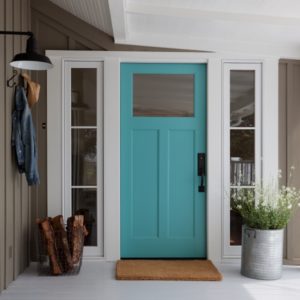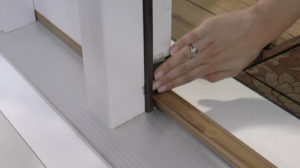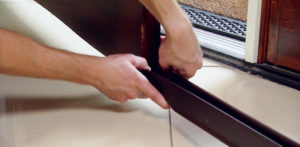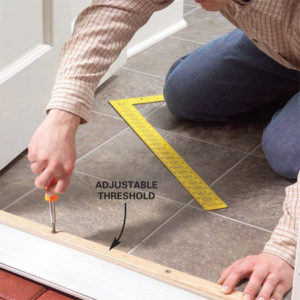As cooler temperatures approach and Winter sets in, sealing your home becomes more important than ever. Doors are extremely susceptible to cold winds and drafts, especially when weathersealing practices are not properly followed. Without weathersealing your home becomes vulnerable and ultimately adds higher heating costs to your monthly bill and allows other season related issues, like cold drafts at the sill, that many homeowners face each season. We’re providing the best inside look for preparing your home for Fall including the importance of weathersealing, the types of weather seals, and installation best practices to keep you home sealed and your family protected. Different types of weatherseals serve different purposes when used at your home’s entryway door.

Image: http://www.pinterest.com/
Weatherstrips, corner pads, door bottoms and proper sill adjustment all affect how well cold air and water are kept outside your home. The weatherstrip is a seal typically designed of soft, flexible material that wicks moisture and seals your door system. Weatherstrips are recommended to be used on the door jamb and header and are an essential part of sealing your home. Corner pads are another helpful weatherseal to use year-round. Also made of moisture-wicking materials, the corner pad is located at the “crucial corner” or where each side of your door frame and door sill meet. Although small, the corner pad’s mighty effect will help keep air and water from entering your home.

Corner Pad Installation Shown in Image
Next, we have the door bottom. Door bottoms can be purchased in many different designs, but what’s important is that all exterior doors have one. Door bottoms help defend the bottom of your door against air, water and light throughout the seasons.

Image: http://www.todayshomeowner.com/
Last, but certainly not least, correct sill adjustment can help protect your home from homeowner issues typically seen in Fall and Winter. Adjusting evenly across the sill and checking each small adjustment for accuracy is most effective. Too much at once on either side can waste time and create more issues moving forward. No matter what type of sill is installed in your home, ensuring that the sill is installed properly and that it meets your door bottom is critical. Without proper installation and adjustment, you could be leaving your front door vulnerable to air and water infiltration.
 Image: http://www.familyhandyman.com/doors/
Image: http://www.familyhandyman.com/doors/
Overall, ensuring a proper seal at your entryway is very important. Your front door has critical areas that are more susceptible to the cooler temperatures and winds that come with the season’s change. Both the door sill and the edges of your door can allow room for drafts, but preventing these issues doesn’t have to fall through the cracks. Without weathersealing, you could face higher monthly heating costs due to the warm air escaping from your home, leaks and cold air drafts and insects that are looking for a warm home for the Winter season.
